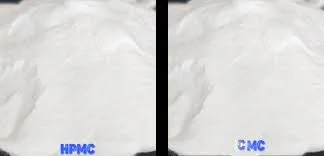
Sep . 15, 2024 16:01 Back to list
redispersible polymer
Understanding Redispersible Polymer Powders A Key Ingredient in Modern Construction
Redispersible polymer powders (RDPs) are specialized materials that play a crucial role in the construction industry. These powders are made from polymer emulsions that have been dried into a fine powder form, allowing them to be easily transported, stored, and utilized in various applications. Once mixed with water, RDPs redispense into a stable emulsion, providing a range of benefits in construction and building materials.
One of the primary advantages of redispersible polymer powders is their ability to enhance the performance of cement-based products. When incorporated into mortars, plasters, and tile adhesives, RDPs improve the workability, adhesion, and flexibility of these materials. This results in stronger bonds and greater resistance to cracking, which is crucial for the durability of construction projects.
Moreover, RDPs contribute to the water retention of mortars, preventing premature drying during application. This is particularly vital in hot or windy conditions where rapid evaporation could compromise the integrity of the material. By maintaining moisture, RDPs allow for better curing of the cement, ultimately leading to higher compressive strength and improved overall performance of the finished product.
Another key benefit of using redispersible polymer powders is their versatility
. They can be formulated into a wide variety of building materials, including self-leveling compounds, repair mortars, and exterior insulation finishing systems (EIFS). This adaptability makes RDPs an essential component for manufacturers seeking to create high-performance products that meet specific application requirements.redispersible polymer

In addition to improving mechanical properties, RDPs also offer enhanced resistance to environmental factors. Polymer-modified mortars can demonstrate improved water resistance and reduced permeability, which protects structures from the damaging effects of moisture infiltration. This aspect is especially valuable in regions prone to heavy rainfall or flooding, as it helps mitigate issues such as mold growth and corrosion of reinforcing materials.
Furthermore, the use of redispersible polymer powders aligns with the growing demand for sustainable construction practices. By incorporating RDPs, producers can create more efficient and eco-friendly building materials. For instance, RDPs allow for the reduction of cement content in formulations, resulting in lower carbon emissions during production. This shift not only makes construction processes more sustainable but also supports green building certifications that are increasingly sought after in today’s market.
Nonetheless, while the benefits of RDPs are clear, it is important for manufacturers to select the right type of polymer for their specific applications. Factors such as the type of binder, desired tensile strength, and environmental exposure should all be considered when formulating products with redispersible polymer powders. Collaboration with suppliers and thorough testing can help ensure optimal performance and compliance with industry standards.
In conclusion, redispersible polymer powders serve as a vital ingredient in modern construction materials, offering significant enhancements in performance and sustainability. Their ability to improve adhesion, flexibility, and workability, along with their versatility across various applications, solidifies their importance in the industry. As construction practices continue to evolve towards greener and more efficient solutions, RDPs will undoubtedly play a pivotal role in shaping the future of building materials.
-
Versatile Hpmc Uses in Different Industries
NewsJun.19,2025
-
Redispersible Powder's Role in Enhancing Durability of Construction Products
NewsJun.19,2025
-
Hydroxyethyl Cellulose Applications Driving Green Industrial Processes
NewsJun.19,2025
-
Exploring Different Redispersible Polymer Powder
NewsJun.19,2025
-
Choosing the Right Mortar Bonding Agent
NewsJun.19,2025
-
Applications and Significance of China Hpmc in Modern Industries
NewsJun.19,2025







